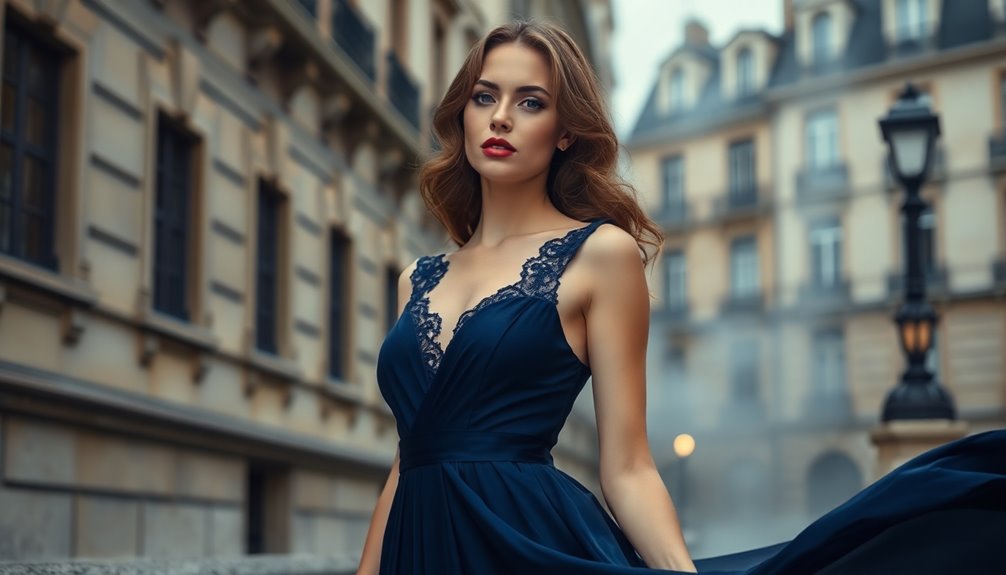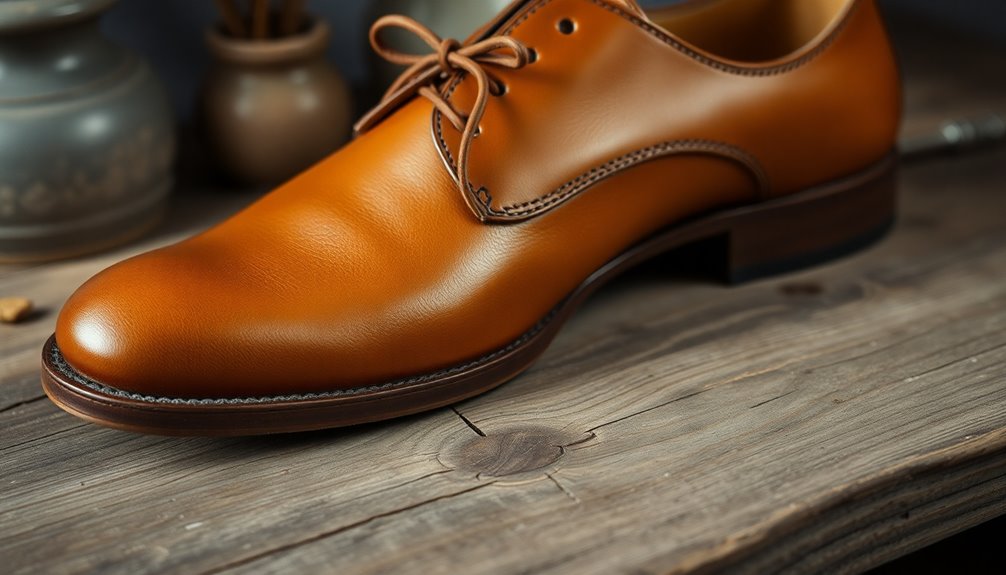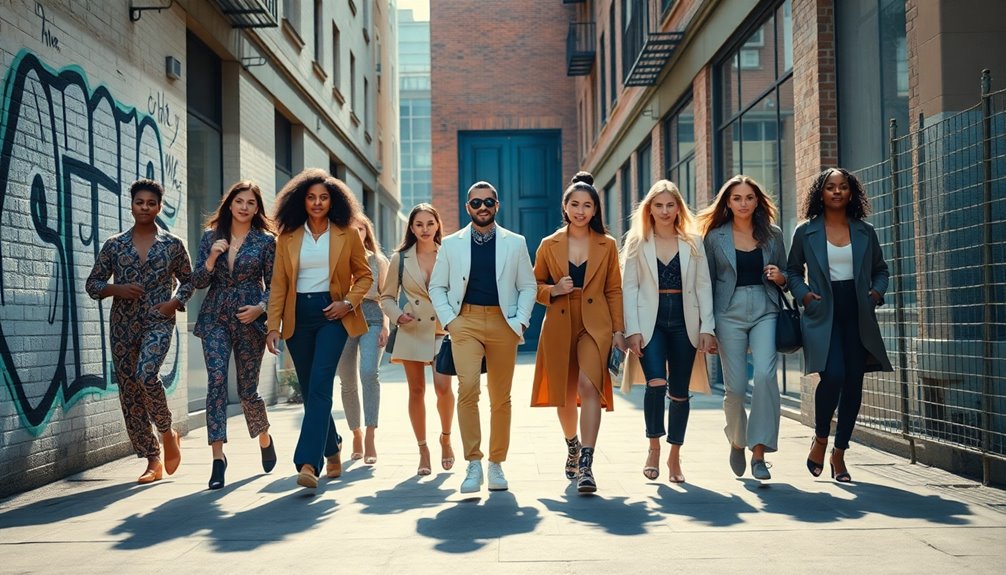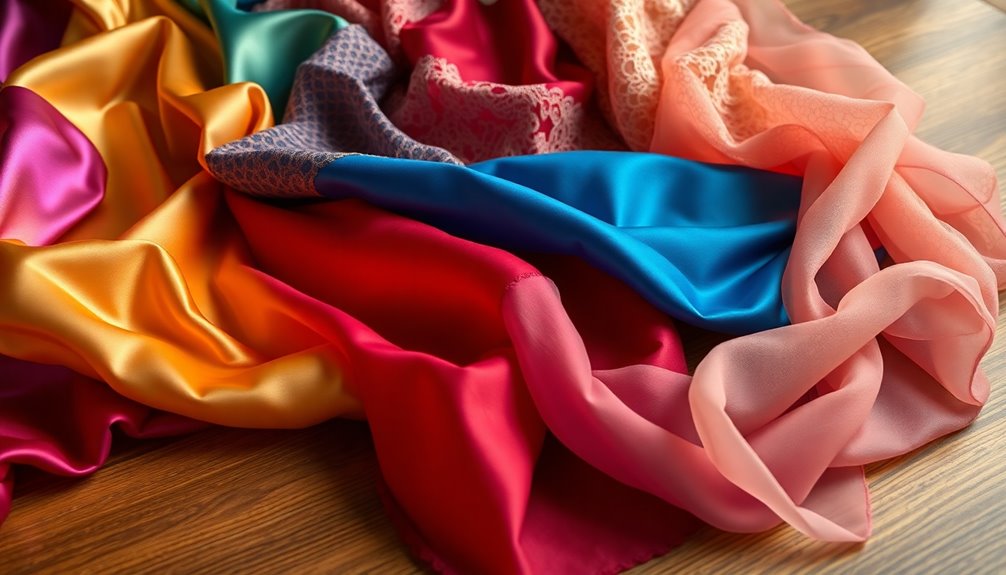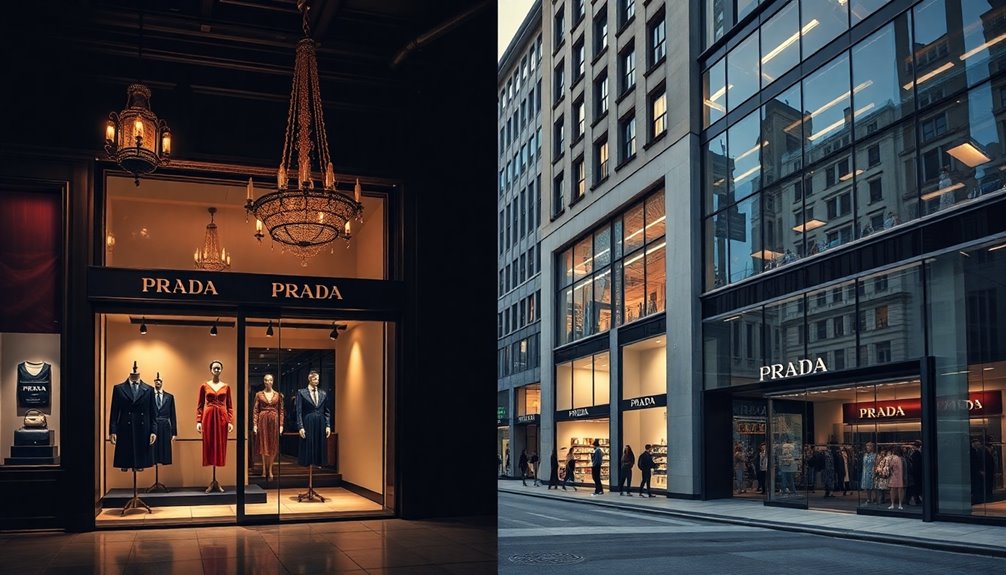Dior's vision truly transformed fashion with the iconic launch of the New Look in 1947. You'll feel the shift from the austerity of wartime to a new era of luxurious femininity. This groundbreaking design emphasized soft silhouettes and elegance, reestablishing Paris as the fashion capital. Although some critiqued its implications for women's liberation, the overall impact marked the beginning of the Golden Age of Couture. Dior's influence didn't stop there; it continues to inspire designers today. If you're curious about how these changes unfolded, there's much more to explore about Dior's lasting legacy in fashion.
Key Takeaways
- Dior's New Look revolutionized fashion by shifting focus from wartime practicality to luxurious, feminine silhouettes, redefining women's roles in society.
- The 1947 debut collection reestablished Paris as the fashion capital, signaling the beginning of the Golden Age of Couture.
- Critiques of Dior's designs sparked discussions on women's liberation, highlighting the tension between fashion and independence during the post-war era.
- Dior's enduring influence inspires contemporary designers, with runway shows regularly paying homage to his iconic styles and elegance.
- The launch of Miss Dior perfume in 1947 established a luxury staple, showcasing innovative marketing that transformed the fragrance industry.
Founding the House of Dior
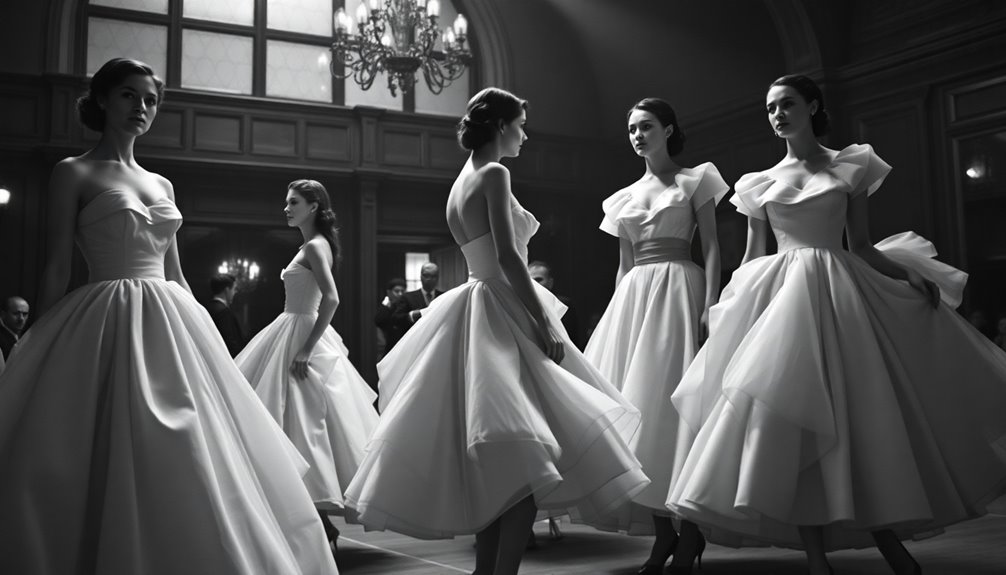
In 1946, Christian Dior established the House of Dior with the support of textile magnate Marcel Boussac, setting the stage for a fashion revolution.
Located at 30 Avenue Montaigne, Dior gained exclusive control and profit-sharing, allowing him to shape his vision freely.
On February 12, 1947, he presented the debut collection, Corolle, featuring 90 stunning garments that captivated audiences.
By 1948, Dior began international expansion, introducing luxury ready-to-wear on Fifth Avenue in New York.
The atelier evolved into a bustling creative hub, leading to licensing the Dior name for various products, which boosted brand visibility.
With the launch of Dior Eyewear in the late 1960s and accessories in 1949, you can see how the Dior legacy continued to flourish.
The Impact of the New Look
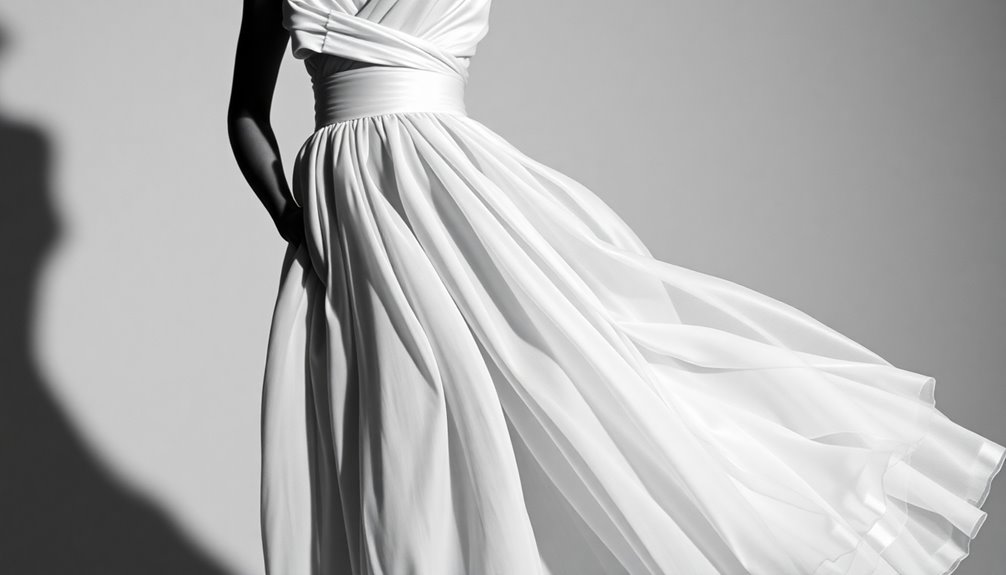
Christian Dior's debut collection, Corolle, revolutionized the fashion landscape with the introduction of the New Look on February 12, 1947.
You'll notice how this collection shifted the focus from the practical, wartime styles to luxurious, feminine silhouettes. The New Look featured tight-fitting jackets, padded hips, and flowing skirts, capturing a sense of elegance that women craved after years of austerity.
As you explore the designs, you'll see they drew inspiration from historical styles, helping to reestablish Paris as the fashion capital.
The New Look didn't just change clothing; it transformed the very notion of femininity in fashion, making it a symbol of post-war renewal and marking the beginning of the Golden Age of Couture.
Critiques of Dior's Designs
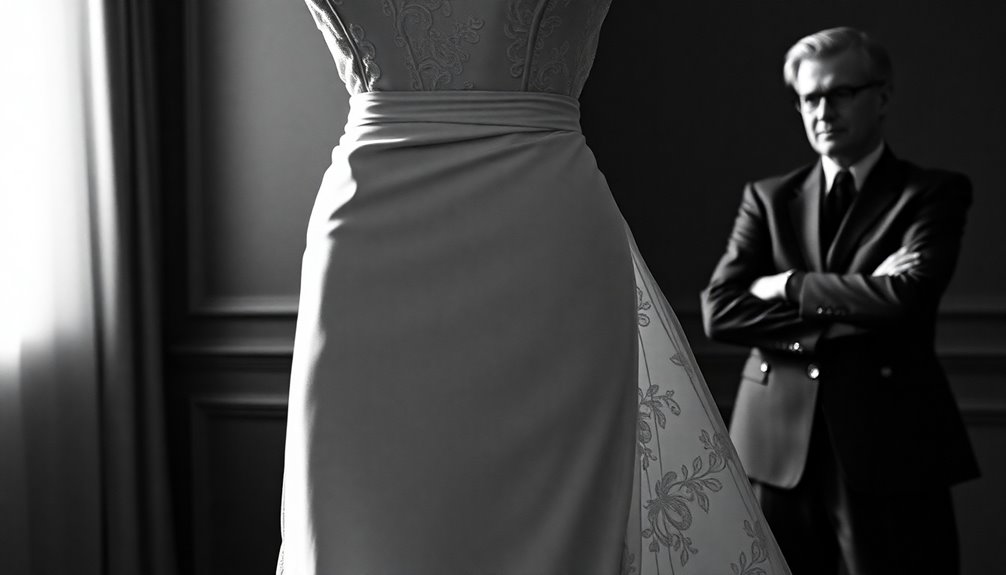
The New Look, while celebrated for its elegance, faced significant critiques that questioned its implications for women's liberation. Many saw the style as restrictive, undermining the independence women fought for during the war. Critics like Coco Chanel dismissed the designs as mere "upholstery," arguing they stifled women's freedom of movement and expression.
Protests emerged from groups such as the Little-Below-the-Knee Club, expressing dissatisfaction with the style's perceived backwardness. Ethical concerns also surfaced regarding labor practices in the fashion industry, including:
- Allegations of worker exploitation
- Disparities in production costs versus retail prices
- Critiques of the fashion hierarchy
- Questions about sustainability and ethical sourcing
These critiques highlighted the complexities of Dior's impact on both fashion and society.
Lasting Influence in Fashion
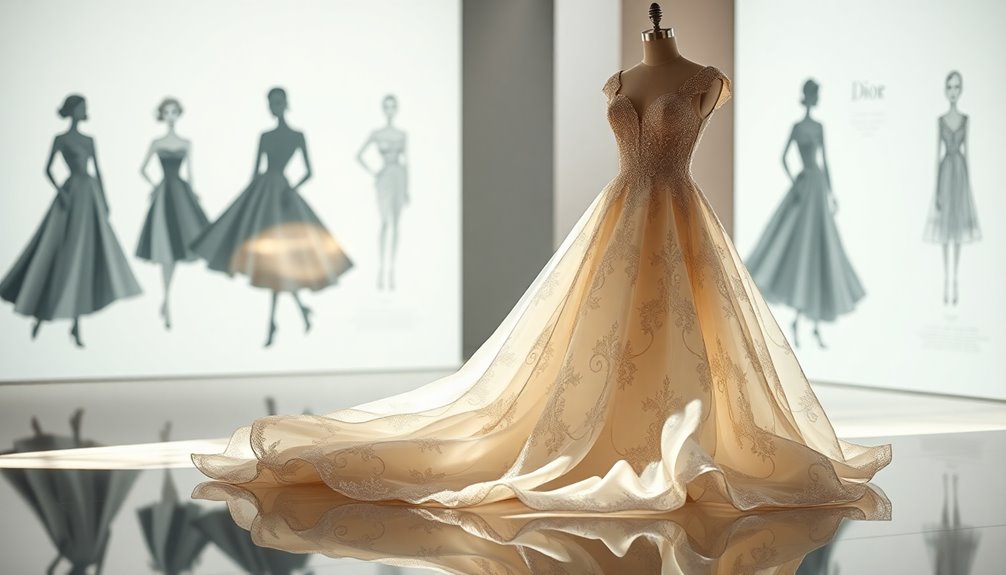
Dior's creations continue to resonate in the fashion world, shaping trends and inspiring designers across generations. The revolutionary New Look redefined femininity and elegance, paving the way for modern interpretations that blend classic and contemporary styles.
You'll find that runway shows often pay homage to Dior's original designs, showcasing how his vision remains relevant today. Each piece reflects a commitment to craftsmanship, ensuring that the brand's heritage persists while evolving.
Additionally, the launch of Miss Dior perfume in 1947 exemplifies how Dior captured the essence of beauty, solidifying his legacy not just in fashion but in fragrance as well. This enduring influence encourages new talents to explore elegance and innovation, keeping Dior's spirit alive in the ever-evolving fashion landscape. Furthermore, Dior's ability to mobilize mental potential through creativity has inspired countless designers to push the boundaries of fashion.
Dior's Early Life and Influences

Growing up in a family that cherished both art and business, the future fashion icon was influenced deeply by his surroundings. From an early age, you could see how his experiences shaped his unique vision for fashion.
- His childhood garden at Villa Les Rhumbs inspired floral motifs in his later designs.
- Moving to Paris at age ten exposed him to the vibrant art scene.
- Studying political science at École des Sciences Politiques broadened his perspective on society.
- Early work as a fashion illustrator and collaborations with renowned designers refined his skills.
These formative experiences laid the groundwork for Dior's revolutionary approach to women's fashion, marrying elegance with a deep appreciation for femininity.
Ultimately, this approach transformed the fashion landscape.
The Shift in Women's Fashion
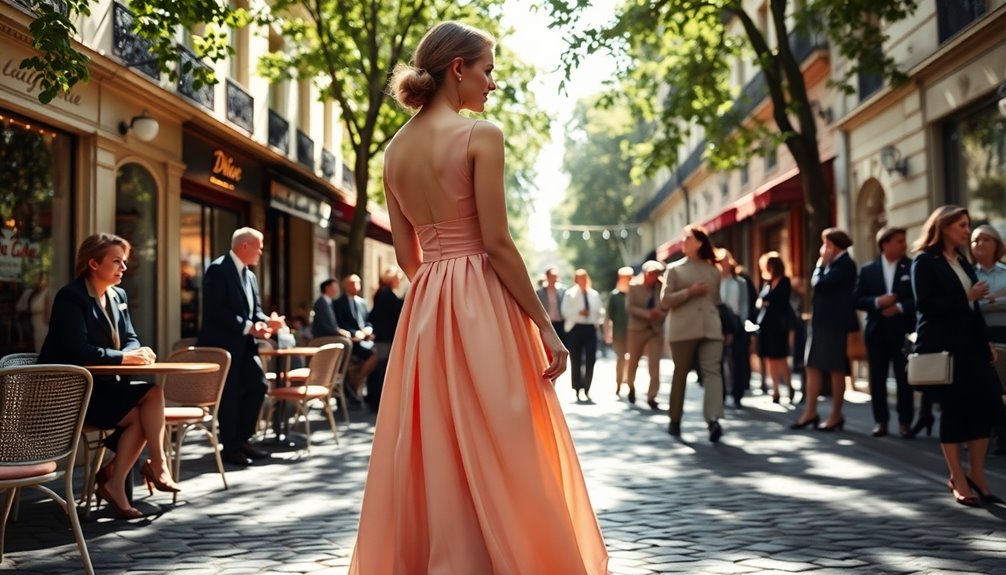
Shifts in women's fashion during the mid-20th century reflected a broader societal transformation, moving away from the constraints of wartime clothing to embrace a newfound sense of freedom and femininity. Dior's New Look epitomized this change, introducing luxurious silhouettes that celebrated the female form. You could see how these designs empowered women, allowing them to reclaim their femininity in a post-war world.
| Style Element | Description |
|---|---|
| Silhouette | Curvy, with nipped waists and full skirts |
| Fabrics | Luxurious materials like silk and taffeta |
| Color Palette | Soft pastels and bold hues |
| Accessories | Statement hats and gloves |
| Cultural Impact | Redefined femininity and elegance |
This shift marked the beginning of a new era in women's fashion, embracing elegance and self-expression.
Legacy in Perfume and Beauty
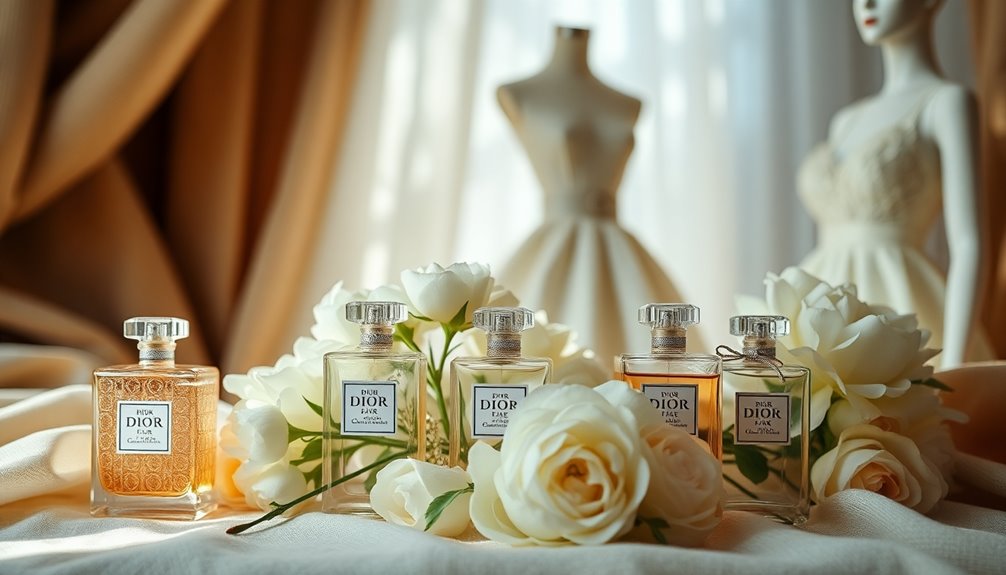
The launch of Miss Dior in 1947 marked a pivotal moment in the perfume industry, showcasing a commitment to elegance and femininity that extended beyond fashion.
This fragrance not only captured the essence of Dior's vision but also established a legacy that continues to resonate today.
You can appreciate how Dior transformed beauty with:
- A focus on floral notes, symbolizing grace and sophistication.
- Innovative marketing strategies that made perfume a luxury staple.
- Collaborations with renowned artists, enhancing the brand's artistic image.
- A diverse range of fragrances that cater to various tastes and lifestyles.
This dedication to beauty and craftsmanship guarantees Dior remains a leader in the perfume and beauty industry, embodying timeless elegance that appeals to generations. Additionally, Dior's focus on hydration techniques ensures that their fragrances not only smell exquisite but also promote overall skin health and beauty.
Frequently Asked Questions
What Materials Did Dior Primarily Use in His Designs?
When exploring Dior's designs, you'll notice a strong emphasis on luxurious materials.
He primarily used fabrics like silk, wool, and cotton, often incorporating taffeta and chiffon for their elegant drape.
Dior favored rich textures, which enhanced the femininity of his silhouettes.
You'll find that his choice of materials not only elevated the aesthetic but also contributed to the overall opulence and craftsmanship that defined his iconic collections.
How Did Dior's Designs Influence Other Fashion Brands?
Dior's designs set a new standard in fashion, influencing countless brands to embrace elegance and femininity.
You can see this impact in the emphasis on structured silhouettes and luxurious fabrics among contemporary designers. Many brands adopted elements of the New Look, creating collections that highlight a woman's form while also incorporating modern twists.
This shift encouraged a broader appreciation for haute couture, inspiring designers to blend tradition with innovation in their own creations.
What Was Dior's Approach to Sustainability in Fashion?
Dior's dedicated approach to sustainability in fashion showcased a shift toward responsible practices.
You'll notice the brand embraces eco-friendly materials, prioritizing quality over quantity.
They're committed to reducing waste through innovative techniques and recycling initiatives.
By focusing on craftsmanship, they guarantee longevity in their designs, encouraging consumers to cherish each piece.
This mindful movement not only highlights Dior's elegance but also sets a standard for sustainability within the luxury fashion landscape.
How Did Dior's Collections Reflect Cultural Trends of the Time?
Dior's collections vividly reflected the cultural trends of their time by embracing femininity and luxury, marking a departure from wartime austerity.
When you look at the New Look, you see how it celebrated body shape and elegance, aligning with post-war desires for glamour.
Each design echoed historical influences while catering to a society keen for opulence, allowing you to experience the cultural shifts and aspirations of women in that transformative era.
What Role Did Celebrity Endorsements Play in Dior's Success?
You might think celebrity endorsements are just a modern marketing tactic, but they've always played an essential role in fashion.
For Dior, Hollywood stars embraced his designs, elevating his brand's status. By wearing his creations, these icons not only showcased the elegance of Dior's work but also created a buzz that attracted more customers.
This synergy between celebrity and fashion helped cement Dior's reputation and expanded his influence in the industry considerably.
Conclusion
To sum up, Christian Dior's vision reshaped the fashion landscape, paving the way for designers to explore new boundaries of femininity and elegance. Imagine a modern-day designer, inspired by Dior, creating a collection that combines sustainable materials with the classic New Look silhouette. This blend of tradition and innovation showcases how Dior's legacy continues to spark creativity, encouraging both established and emerging talents to push the limits while honoring the craftsmanship that transformed fashion forever.
